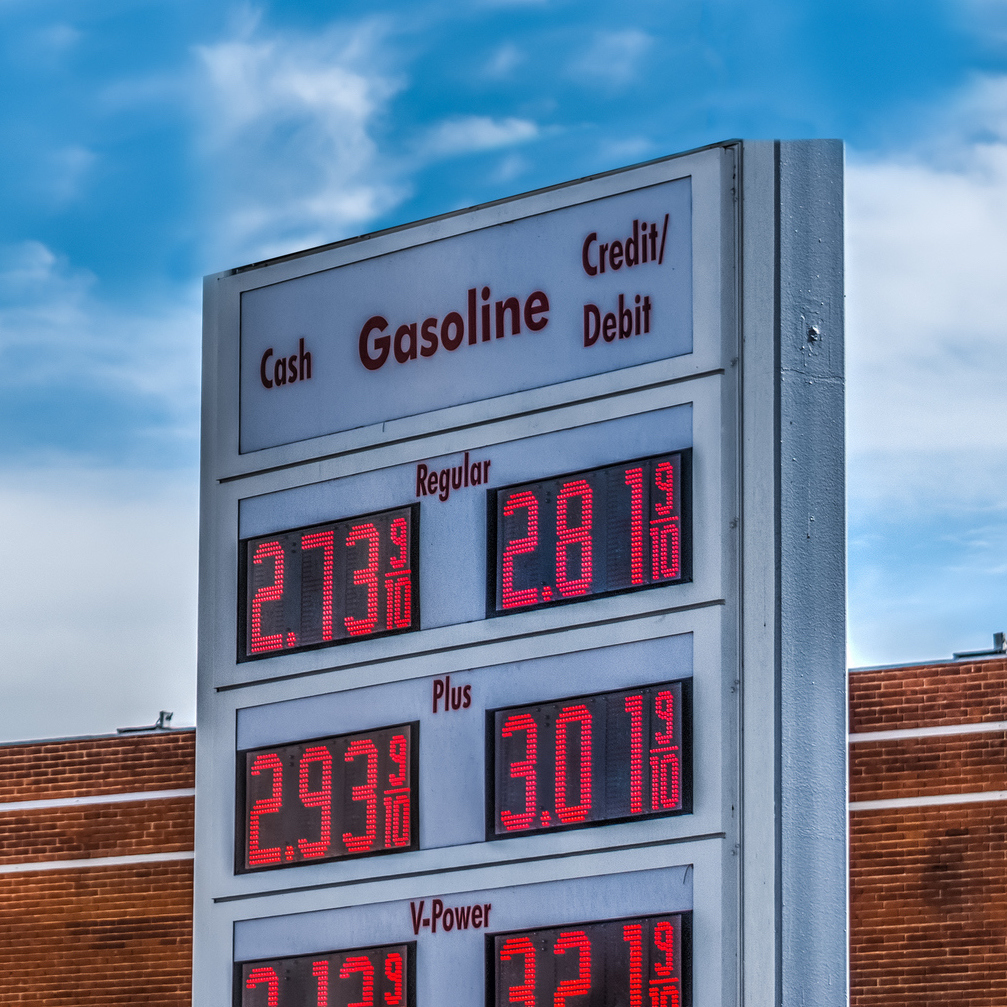

U.S. retail gasoline prices slipped last week to a national average of $2.57, down 2.5 cents from the prior week, and diesel fuel also slipped a bit, 2.0 cents a gallon to $2.98. Month over month, the price rose almost four cents and is nearly 30 cents a gallon higher year over year. Last month the national average was $2.54, while the year-ago average was $2.28.
Rising inventories in the week ended February 2 combined with U.S. production of 10.25 million barrels in the week helped hold prices down. The sharp dip in stock prices added more price pressure. Last Friday, West Texas Intermediate (WTI) crude oil settled below $60 a barrel for the first time this year.
Crude oil inventories have fallen by more than 88 million barrels over the past 12 months, largely due to stronger demand. Refinery utilization unexpectedly rose last week from 88% in the prior week to nearly 93%. Gasoline inventories fell by 3.4 million barrels last week and are now down about 11 million barrels over the past 12 months.
Patrick DeHaan, head of petroleum analysis at GasBuddy, said:
The wait is over – 2018’s first weekly drop at gas pumps has arrived with the national average losing ground in the last week. As the Dow Jones average swung violently, oil prices lost considerable ground, falling below $60 per barrel for the first time this year. In addition, a weekly report from the government showed a trifecta of inventory increases: crude oil, gasoline and distillate inventories all gained, pushing wholesale gasoline prices down and paving the way for gas prices to cool off. These factors have opened the door for perhaps a brief window of relief at the pump that may last for several weeks. I’d expect most places would see gas prices decline in the week ahead as a direct result. But don’t get too giddy – there are still some gray clouds on the horizon.
According to GasBuddy, states where prices moved most last week were: Indiana and Michigan (down 12 cents); Ohio (down nine cents); Illinois and Kentucky (down seven cents); Nevada (up five cents); Mississippi (down five cents); and Maryland, North Carolina and New Mexico (down four cents).
States with the lowest average prices last week included Mississippi ($2.32); South Carolina ($2.33); Alabama, Missouri and Texas ($2.34); Arkansas ($2.36); Oklahoma and Tennessee ($2.37); Ohio ($2.38); and New Mexico ($2.39).
The highest average prices per gallon last week were reported from Hawaii ($3.44); California ($3.33); Alaska ($3.12); Washington ($2.99); Pennsylvania ($2.87); Nevada ($2.86); Oregon ($2.85); New York and Connecticut ($2.76); and New Jersey ($2.69).
WTI crude oil for March delivery traded up about 1.1% in the late morning Monday to $59.82, while Brent for April delivery traded at $63.23. The price differential (spread) between WTI and Brent crude rose slightly (17 cents) to $3.41 a barrel week over week.
Sponsored: Find a Qualified Financial Advisor
Finding a qualified financial advisor doesn’t have to be hard. SmartAsset’s free tool matches you with up to 3 fiduciary financial advisors in your area in 5 minutes. Each advisor has been vetted by SmartAsset and is held to a fiduciary standard to act in your best interests. If you’re ready to be matched with local advisors that can help you achieve your financial goals, get started now.
Thank you for reading! Have some feedback for us?
Contact the 24/7 Wall St. editorial team.
 24/7 Wall St.
24/7 Wall St.

